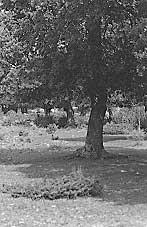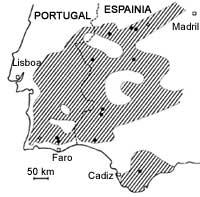Arboreal destruction in the Iberian peninsula
C. C. M. M. The forestry researcher Brasier has announced in the journal “Nature” the arboreal catastrophe that is taking place in the southwest of the Iberian peninsula and has considered it convenient to summarize the exposed in the following lines.

A group of cork bushes, oaks and trees of their kind sicken and kill along the Iberian peninsula. In 1991, 1,050 main outbreaks of disease were recorded in 2.2 million hectares analyzed in the Spanish southwest. Among them were 265 foci of the “Natural Park of Alcornocales”, located in Andalusia, with a total area of 21.4 ha.
More than half of the trees present in the sick or dead areas were present. A similar phenomenon is taking place in southern Portugal, Italy, Morocco and Tunisia.
The mortality that occurred since 1900 in the centre and east of Europe, within the genus Quercus, and also in the Mediterranean, has been attributed to drought, pollution and the attack of insects and fungi.
Following the invitation of the Spanish Agrarian Minister and the University of Algarve from May 1991 to March 1992, I have explored some places in the Iberian Peninsula where art has fallen. The symptoms and distribution of the disease indicated that the culprit could be the fungus Phytophthora. The trees died suddenly, one or two years. Death occurred in groups located next to the river, in valleys and in depressions.
Sometimes the cause of their disappearance was attributed to the erosion of the winter rain water or the plough of the earth, and when the disappearance is chronic, it is attributed to the sterility of the land. In this last situation, the thickets of the lands also deteriorate.

The trees that are about to die in dry soils have some dead branches in the roots. With the use of a certain apple beita and antibiotics, the pathogen Phytophthora cinnamomi was isolated. This pathogen was isolated in eleven of the thirty areas studied. In the dry lands it is very difficult to isolate this pathogen and we also triumphed, especially in the humid lands.
Phytophthora cinnamomi is a more polyphagous pathogen that acts on roots at 25-30ºC. It is believed that the origin is from New Guinea and man has been the most important distributor. The damage produced is the eucalitus forests of western Australia and the chestnut remains that occurred in the east of the US around 1900. Around 1940 it spread to Europe, creating a great epidemic in chestnut trees.
The pathogen that has reached Spain and Portugal has been found with new plowed lands and dry winters, in addition to having suffered the attacks of insects and other fungi as the trees have weakened.
Buletina
Bidali zure helbide elektronikoa eta jaso asteroko buletina zure sarrera-ontzian











